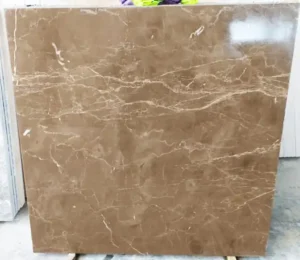Marble kota stone tiles
Marble and Kota stone tiles are two distinct types of natural stones used in flooring, offering a blend of aesthetic appeal and functional durability. In this article, we’ll delve into the properties, uses, benefits, and considerations for choosing marble and Kota stone tiles for various applications.
Introduction
Marble and Kota stone are popular choices for flooring and wall cladding in residential and commercial buildings. Marble, known for its elegance, is a metamorphic rock formed from limestone. Kota stone, on the other hand, is a type of fine-grained limestone found in Kota, Rajasthan, India. Both have unique characteristics that make them suitable for different environments.
Properties of Marble
Marble tiles are renowned for their rich veining and array of colors. Their properties include:
- Aesthetic Appeal: Each marble tile is unique, with distinct patterns and colors ranging from whites and blacks to greens and pinks.
- Durability: Marble is durable but requires maintenance to retain its polished look.
- Heat Resistance: It stays cool, making it ideal for warm climates.
Properties of Kota Stone
Kota stone tiles are valued for their toughness and simplicity. Key properties include:
- Non-Slip Surface: Ideal for outdoor and high-moisture areas.
- Color Range: Mostly found in shades of green, blue, brown, and black.
- Durability: Highly durable and resistant to wear and tear.
Applications
- Marble Tiles: Best for indoor areas like living rooms, bedrooms, and bathrooms due to their elegance and finish.
- Kota Stone Tiles: Suitable for high-traffic areas like corridors, commercial spaces, and outdoor areas because of their durability and slip resistance.
Installation and Maintenance
Marble Installation: Requires professional installation. The surface must be properly sealed to avoid staining.
Kota Stone Installation: Easier to install. It is often left unpolished to retain its natural texture.
Maintenance of Marble: Needs regular polishing and sealing. Acidic substances can damage the surface.
Maintenance of Kota Stone: Relatively low maintenance. Regular cleaning and occasional polishing are sufficient.
Advantages and Disadvantages
- Marble:
- Pros: Adds value to the property, timeless beauty.
- Cons: Expensive, prone to scratching and staining.
- Kota Stone:
- Pros: Cost-effective, highly durable, non-slippery.
- Cons: Limited color range, lacks the sophisticated look of marble.
Environmental Considerations
Both marble and Kota stone have environmental impacts, such as emissions during quarrying and transportation. However, their durability and longevity can make them a sustainable choice if sourced responsibly.
Conclusion
Choosing between marble and Kota stone tiles depends on the intended use, budget, and desired aesthetic. While marble brings a touch of luxury and elegance, Kota stone offers practicality and durability. Understanding their unique properties and maintenance requirements will help in making an informed decision for your flooring needs.
FAQs
Q: Can marble and Kota stone be used together? A: Yes, combining them can balance luxury and practicality, often used in different areas of the same property.
Q: How long do these tiles last? A: With proper maintenance, both can last for decades, making them a long-term investment in your property.
Q: Are marble and Kota stone eco-friendly? A: They can be, particularly if sourced from responsible quarries and used in a way that minimizes waste.


